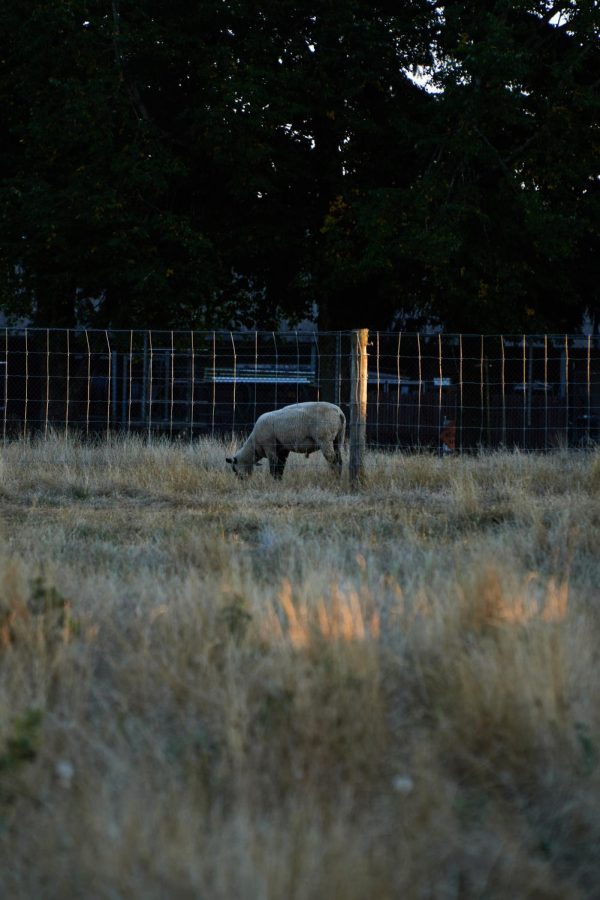OSU study finds hemp byproducts make good feed for lambs
Sheep pictured at Oregon State University. Lambs have been found to respond well to a diet with hemp byproduct, as found by a recent study.
October 10, 2022
For Oregon’s hungry sheep, there’s good news in the form of an Oregon State University study that found hemp byproducts make good feed for lambs.
In a Sept. 21 press release, study co-author Serkan Ates said that to his knowledge, this study is the first to evaluate the effects of feeding spent hemp biomass to livestock.
Ates, an associate professor in the College of Agricultural Science at OSU, said in the same press release that while further research would be needed, “spent hemp biomass can be considered a safe feed…and a good alternative to alfalfa for livestock.”
SHB is the main byproduct produced by extracting cannabidiol, better known as CBD, from hemp. While this may be the first study on SHB, according to Nathan Parker, the study’s lead author, other hemp products have been used in livestock feed in other countries for decades.
“Primarily, the use of hemp seed cake and meal has been evaluated in all manner of livestock feeding systems,” Parker said. “This has shown positive effects on animal health, performance and meat quality.”
Parker is an instructor at OSU’s Department of Animal and Rangeland Sciences, where he is also a doctoral candidate, as well as director of the Clark Meat Science Center.
The study, which was conducted at the Clark Meat Science Center and the Hogg Animal Metabolism Barn, is not the only one at OSU on this topic.
“Our research team has conducted a few other trials evaluating SHB,” Parker said.
According to him, these OSU researchers have also worked on feeding dairy cows and broiler chickens, which are chickens raised for meat. Data from these studies will be published in the near future.
Sunny Summers, senior policy advisor for the Oregon Department of Agriculture, says that the vast majority of hemp grown in Oregon, approximately 99%, is used to produce CBD.
At the moment, SHB is of no economic value to the hemp industry. However, the findings of this study may help change that.
Currently, SHB is not approved for use as animal feed by the Food and Drug Administration. The FDA has set a legal limit for residual cannabinoids, such as THC in food products, of 0.3%.
Until now, there was little to no data about how SHB would impact this in meat.
While Parker noted that this was only one study, and the FDA would need significant evidence to change their policies, he said that results from this study were promising.
“Our research offers evidence that SHB is safe for the animals to consume,” Parker said. “It doesn’t lead to residual levels of THC over the legal limit…in food products.”
“As a meat scientist, I am especially excited to see how dietary SHB can beneficially impact meat quality factors,” Parker said.
According to Parker, bioactive compounds found in hemp could improve the shelf life of meat from animals fed SHB. Additionally, a diet containing SHB led to animals whose meat contained significantly more omega-3 fats, an important component of the human diet.
In the United States for the year 2021, hemp production was valued at $824 million dollars, according to information published by the United States Department of Agriculture. Despite the nationwide value of the hemp industry, hemp in Oregon has struggled over the past three years.
Data from the Oregon Department of Agriculture shows that in 2019, the peak year for Oregon hemp production, 64,124 acres were planted statewide. Since then, the number of acres of hemp has decreased dramatically, with only 3,214 acres planted in 2022, as of September 16.
The value of hemp grown in Oregon is currently unavailable, but the ODA plans to begin publishing these figures by the end of the year.

























































































































